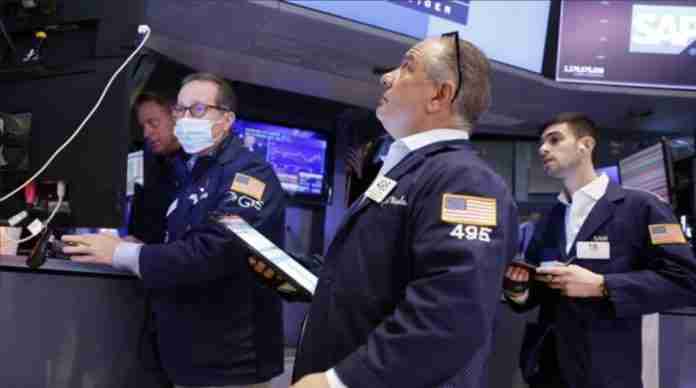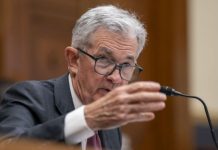
April 28 (UPI) — The Commerce Department announced on Thursday that the U.S. economy shrank slightly during the first three months of 2022 — a contraction that took economists by surprise, given the strong growth seen throughout 2021.
The department said in its quarterly report that gross domestic product — the total output of all goods and services — shrank by 1.4%. Most economists expected the report to show a 1% gain in the January-March period.
“The decrease in real GDP reflected decreases in private inventory investment, exports, federal government spending, and state and local government spending,” the department said in a statement.
“Imports, which are a subtraction in the calculation of GDP, increased.”
The department also said that personal consumption expenditures and fixed investments also increased.
Thursday’s report said that the first-quarter GDP figure, which is the broadest reflection of economic health, continued to be influenced by the COVID-19 pandemic — as well as the expiration of federal aid that was imposed to stimulate recovery.
“An increase in COVID-19 cases related to the Omicron variant resulted in continued restrictions and disruptions in the operations of establishments in some parts of the country,” it said.

“Government assistance payments in the form of forgivable loans to businesses, grants to state and local governments, and social benefits to households all decreased as provisions of several federal programs expired or tapered off.”
The report said the decline in real GDP “reflected decreases in private inventory investment, exports, federal government spending, and state and local government spending.”
The report marked the first decrease in GDP since the April-June period of 2020, when the domestic economy was ravaged by the arrival of COVID-19 and shrank by a staggering 31%. That quarter was followed by six straight quarters of economic growth in the United States — including a blistering 33% growth rebound in the third quarter of 2020.
Thursday’s assessment was also surprising given the growth seen over the entire year in 2021. GDP growth for the year was almost 6%, which was the strongest growth for any full year since 1984.
The department’s report, however, noted that personal income rose in the first three months of 2022 and disposable income increased by close to 5%.
Despite the surprise contraction, most economists believe that it’s not a signal of a looming recession.
“This is noise; not signal,” Ian Shepherdson, chief economist at Pantheon Macroeconomics, said according to CNBC. “The economy is not falling into recession.”
“Trade has been hammered by a surge in imports, especially of consumer goods, as wholesalers and retailers have sought to rebuild inventory. This cannot persist much longer, and imports in due course will drop outright, and net trade will boost GDP growth in Q2 and/or Q3.”
The U.S. economy is considered to have fallen into a recession after several months of consistent economic decline.
President Joe Biden focused on the positives of the report and said that it signals a resilient economy.
“Consumer spending, business investment, and residential investment increased at strong rates,” he said in a statement.
“While last quarter’s growth estimate was affected by technical factors, the United States confronts the challenges of COVID-19 around the world, [Russian President Vladimir] Putin’s unprovoked invasion of Ukraine, and global inflation from a position of strength.”
“Congress needs to pass legislation to lower costs and lower the deficit, reducing families’ prescription drug and utility bills and restoring fairness to our tax code — without raising taxes on anyone making less than $400,000 per year,” Biden added. “That’s how we grow our economy and strengthen the middle class.”
Biden was scheduled to host a small business roundtable at the White House on Thursday. Earlier, a White House report showed that small businesses created almost 2 million jobs over most of 2021.





